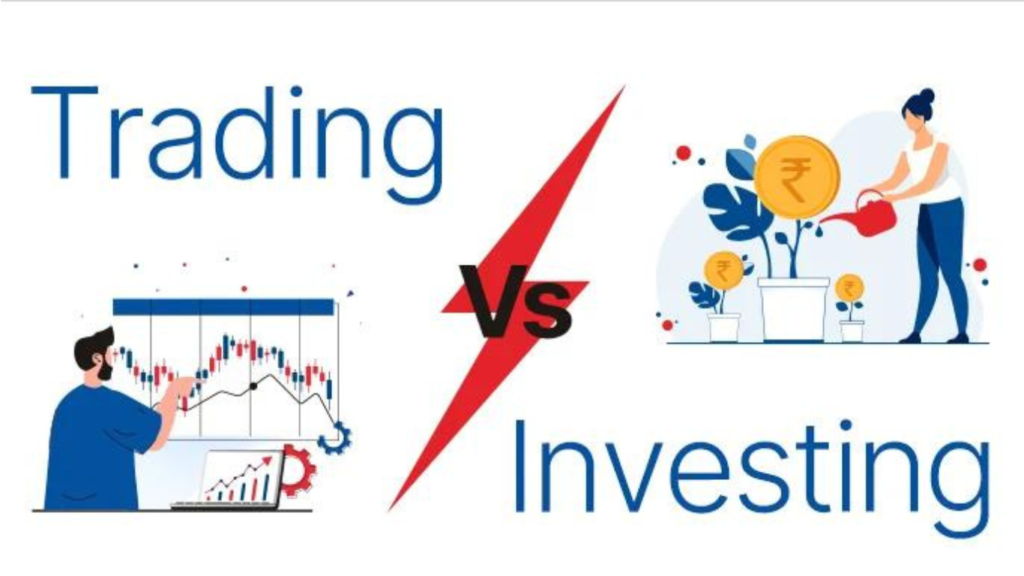When managing your finances in the stock market, it’s essential to understand the fundamental differences between trading and investing. While both activities involve buying and selling assets in the financial markets, they are distinct in their objectives, timeframes, and strategies. Let’s delve into the nuances of trading versus investing, and explore the different approaches required for each.

Defining Trading and Investing
Trading involves the frequent buying and selling of financial instruments, such as stocks, currencies, commodities, or derivatives, to profit from short-term price fluctuations. Traders typically hold positions for a few seconds, minutes, hours, or days, aiming to capitalize on market volatility and momentum.
On the other hand, investing is a long-term strategy focused on purchasing assets with the expectation of generating returns over an extended period, often years or even decades. Investors aim to build wealth gradually by holding onto assets through market ups and downs, leveraging the power of compound interest and dividend reinvestment.

Time Horizon and Goals
One of the key distinctions between trading and investing lies in each approach’s time horizon and goals. Traders seek to exploit short-term market trends and volatility to generate quick profits. They may use technical analysis, chart patterns, and trading indicators to identify entry and exit points for their trades. The primary goal of trading is to maximize returns in the shortest possible time frame, often focusing on capitalizing on small price movements.
On the other hand, investors take a long-term view of the market and aim to achieve financial goals such as retirement savings, wealth preservation, or funding major life events like education or homeownership. They focus on fundamental analysis, evaluating companies’ or assets’ underlying value and growth potential, rather than short-term price movements. The primary goal of investing is to build wealth steadily over time, often through the power of compounding and strategic asset allocation.

Risk and Reward
Another crucial aspect to consider when comparing trading and investing is the risk-reward profile of each approach. Trading typically involves higher levels of risk due to the short-term nature of trades and the potential for significant price fluctuations. Traders often use leverage, margin trading, and derivative instruments to amplify their gains, but this also exposes them to higher levels of risk and potential losses.
Investing is generally considered less risky over the long term, as it allows investors to diversify their portfolios, mitigate risk through asset allocation, and benefit from the overall growth of the economy and financial markets. While investing does not offer the same potential for quick, high returns as trading, it provides more stability and predictability over time, making it suitable for long-term wealth accumulation.

Required Skills and Strategies
Successfully engaging in trading requires a specific set of skills and strategies, including quick decision-making, risk management, and emotional discipline. Traders must stay informed about market news and events, analyze price charts and patterns, and execute trades swiftly and efficiently. They also need to manage their risk exposure effectively, set stop-loss orders, and adhere to strict trading plans to avoid impulsive decisions driven by fear or greed.
Investing, on the other hand, demands patience, discipline, and a long-term perspective. Investors need to conduct thorough research on potential investment opportunities, assess the financial health and performance of companies, and create a well-diversified portfolio aligned with their risk tolerance and financial goals. They must also practice disciplined portfolio management, periodically review their investments, and make adjustments as needed to stay on track toward their objectives.

Conclusion
In conclusion, while trading and investing share the common goal of profiting from financial markets, they differ significantly in their objectives, timeframes, and strategies. Trading is focused on short-term speculation and capitalizing on market volatility, requiring quick decision-making and risk management skills. Investing, on the other hand, is a long-term wealth-building strategy that emphasizes fundamental analysis, patience, and disciplined portfolio management.
Whether you choose to trade or invest depends on your financial goals, risk tolerance, and time horizon. Both approaches offer opportunities for success in the markets, but it’s essential to understand the differences between them and choose the strategy that aligns best with your objectives and preferences. By clarifying the distinctions between trading and investing, you can make informed decisions to grow and preserve your wealth effectively over time.

FOR A FREE STOCK MARKET SEMINAR VISIT HERE
CALLS @ 9986622277
Disclaimer
The information provided here is for general informational purposes only and should not be construed as financial advice. Investing in the stock market involves inherent risks, and there is no guarantee of profits or protection against losses. Before making any investment decisions, it is essential to conduct thorough research and seek advice from a qualified financial advisor or professional.
